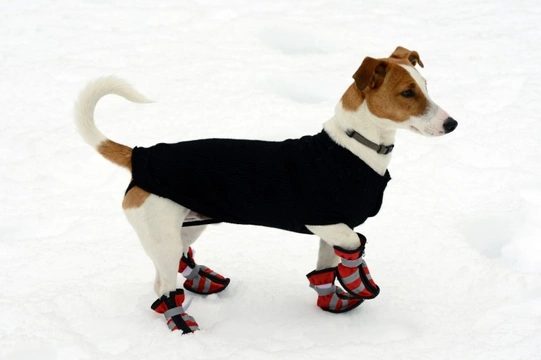
Five myths about dogs that do and do not need booties in winter
It can be hard for dog owners to know when their dogs need to wear a supplementary coat in winter, and even if their dog is a type that needs a coat at all; when it comes to dog booties things can be even more confusing.
The use of booties for dogs is if anything even more poorly understood than dog coats, and so a lot of people have misapprehensions about their use, applications, and pros and cons.
This article will tell you five myths about dogs and winter booties, and explain the truth of the matter! Read on to learn more.
Booties are just for toy dogs
Very petite dogs will generally need booties in winter, for a number of reasons. Tiny dogs have very fine bones and paw pads that are not very fleshy or cushioned, which makes them very vulnerable in all types of weather; including the summer in fact. Pavements can get too hot for any dog’s paws, but this is a risk for small dogs in particular.
However, winter comes with more paw hazards for small dogs than summer does, including frostbite, salt and grit grazes from products designed to provide traction on ice, chemical burns from de-icing agents, standing on something moderately sharp or abrasive that is masked by snow, and of course, simply getting too cold, which is worsened by damp and wet paths.
These issues can all face some pretty big dogs too however; those that share some traits with some toy dogs, like having finely built legs, narrow paws and particularly, not a lot of flesh on the paws.
While it is certainly less common to see larger dogs in booties in winter, part of this is due to a lack of appreciation of their value for dogs based on the dog type rather than size. Greyhounds, for instance, can often benefit from wearing booties in very cold and harsh weather.
Dogs that need coats also automatically need boots
Winter coats for dogs that are both insulated and waterproof can help even the least hardy of dogs to enjoy their walks and stay comfortable and vitally, safe when the weather is really cold.
However, whether or not a dog needs a coat needs to be determined on a dog-by-dog basis, and sometimes even two dogs of the same breed that might seem to be ostensibly very similar might differ in this respect.
Some dogs that need coats also need boots too; but this is not always the case. There are far more dogs and dog types that can benefit from wearing a coat than those that also need a pair of booties too, and so needing a coat for your dog does not automatically mean they need a pair of booties as well.
However, other than dogs with specific paw problems that might mean they need a boot for a reason other than the weather, dogs that don’t need coats to help keep them warm in the cold rarely need boots on their own.
Keeping a dog’s feet warm and dry is an un-problem
Dogs have paws designed for walking barefoot, so it might seem odd to many people that some dogs would need boots; dogs never needed boots when they lived in the wild after all, so how is a sudden need to keep their paws warm and dry a problem?
Well, first of all, dogs in the wild have evolved with the traits they need to survive in their native environment and many of our modern dog breeds just flatly would not survive on their own as a stray or feral dog; also, they would not have been transplanted from their native environment to one they were totally unprepared to live within, so there is no comparison.
Additionally, booties can be used for and perform several other roles than just keeping a dog’s feet warm and dry, although this is generally the main point of them for most dogs. Booties also help to keep the dog’s general temperature stable and not just their feet, and they also protect them from hazards on the ground, and prevent chapping and grazing.
Dogs are very restricted by boots
Boots or booties do have an impact on dogs that wear them and it takes dogs time to get used to wearing them and both feel comfortable, and move freely. It is true that boots are somewhat restrictive to dogs, but only to a limited degree; a dog like a greyhound would not be able to reach the same speed as they would barefoot, for instance, but they’ll still be pretty fast!
Cold weather and cold ground underfoot is itself restrictive for dogs in many ways too, and so for dogs that can benefit from booties, the effects cancel each other out.
It goes without saying of course that any dog’s booties must be a good fit for them, or this will indeed restrict them and may be uncomfortable or even dangerous.
Boots make dog’s paws soft and less hardy
A dog that needs booties and that will suffer without them will not toughen up if they are denied boots; they’ll just develop foot problems and be in pain and discomfort.
On the flipside, you should not overuse dog boots or put your dog in them when the weather or other reasons don’t warrant them, but using dog boots appropriately and when needed will not make your dog unable to walk without them at other times!



